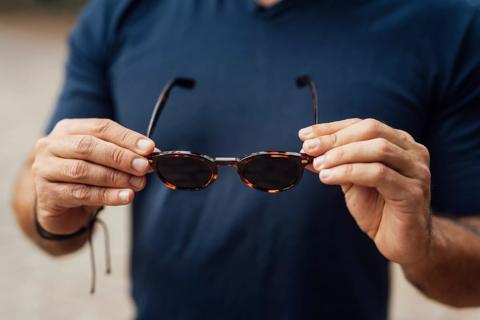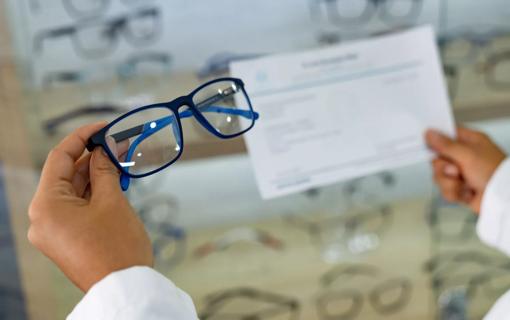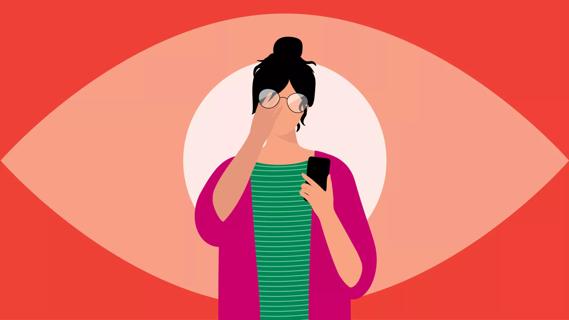Advertisement
About 35% of people with this autoimmune condition also develop uveitis

Ankylosing spondylitis (AS) is a type of inflammatory arthritis that typically affects your lower back.
Advertisement
Cleveland Clinic is a non-profit academic medical center. Advertising on our site helps support our mission. We do not endorse non-Cleveland Clinic products or services. Policy
While those who have AS may experience stiffness, fatigue and pain, the autoimmune condition can also cause eye inflammation known as uveitis.
Rheumatologist Ahmed Elghawy, DO, explains why you may experience eye problems and what treatments are available.
The short answer is: Doctors aren’t entirely sure.
“With autoimmune conditions like ankylosing spondylitis, your body is acting inappropriately against its own tissue,” explains Dr. Elghawy. “We think this is also the case when it comes to uveitis. There may have been some sort of pathogen that could have led to the body recognizing a self-antigen instead of the pathogen. The body makes the mistake of attacking itself.”
There may also be a link between a certain gene known as HLA-B27 that’s common in both ankylosing spondylitis and uveitis.
Between 25% to 35% of individuals with ankylosing spondylitis will go on to develop some sort of uveitis.
There are different types of uveitis:
“The longer the patient has ankylosing spondylitis, the more likely they are to develop uveitis,” says Dr. Elghawy.
Uveitis typically only affects one eye at a time; though, it’s possible to have symptoms in both eyes at once.
If you have uveitis, you may experience the following symptoms:
“In people who are older, uveitis increases the risk of developing cataracts or glaucoma or making those conditions worse,” says Dr. Elghawy.
If not treated, uveitis can harm your vision and could potentially lead to blindness.
Advertisement
“We recommend that those who have eye issues at all, especially who already carry a diagnosis of ankylosing spondylitis, that they let their doctor know immediately because it needs to be it needs to be addressed quickly,” emphasizes Dr. Elghawy.
Your doctor will not only treat uveitis, but will also treat your ankylosing spondylitis. In many cases, your rheumatologist may suggest you see an ophthalmologist, too.
Treatment options for uveitis may include anti-inflammatory eye drops or eye drops with corticosteroids.
Treatments options for AS can include:
Often, the biologic therapies used for ankylosing spondylitis also address uveitis.
“A common scenario would be a person who has low back pain and was treated with prescription or over-the-counter NSAIDs. They’re doing well, but later they develop eye issues, and then, that’s what kind of prompts us to start the biologic therapy,” explains Dr. Elghawy. “There are other individuals who are on biologic therapy who never go on to develop uveitis and that’s probably because they’re already being treated with the biologic therapy.”
And don’t overlook the importance of regular eye exams, says Dr. Elghawy.
“Sometimes, you may find evidence of uveitis during a typical eye exam, even before you have symptoms,” he adds. “So, it’s important if you do have evidence of uveitis, it’s treated properly to prevent the long-term consequences.”
Advertisement
Learn more about our editorial process.
Advertisement

While it’s best to fix amblyopia during childhood, it can also be addressed as an adult

Preserving your social life and protecting your mental health are key to living well with vision loss

Start low-vision rehabilitation as soon as possible and see your retina specialist at least every six months

These trendy glasses might brighten some shades and help you see the difference between colors or brightness of hues, but they won’t cure your color vision deficiency

Eye drops and cold water rinses can help speed up healing for viral and allergen-related conjunctivitis, but a bacterial infection will need antibiotics

Your eye prescription reveals a lot about your eye health, including how they’re shaped, how well you see and what your new glasses can do for your sight

From scratching your cornea and tearing your retina to introducing allergens and causing infections, pawing at your peepers just doesn’t pay off

It’s critical to have the proper eyewear if you plan to look up at the sun, especially during the total solar eclipse on April 8, 2024

Focus on your body’s metabolic set point by eating healthy foods, making exercise a part of your routine and reducing stress

PFAS chemicals may make life easier — but they aren’t always so easy on the human body

While there’s little risk in trying this hair care treatment, there isn’t much science to back up the claims